CPS Unit Number 024-03
Camp: 24
Unit ID: 3
Operating agency: MCC
Opened: 2 1942
Closed: 9 1946
Workers
Total number of workers who worked in this camp: 43
-
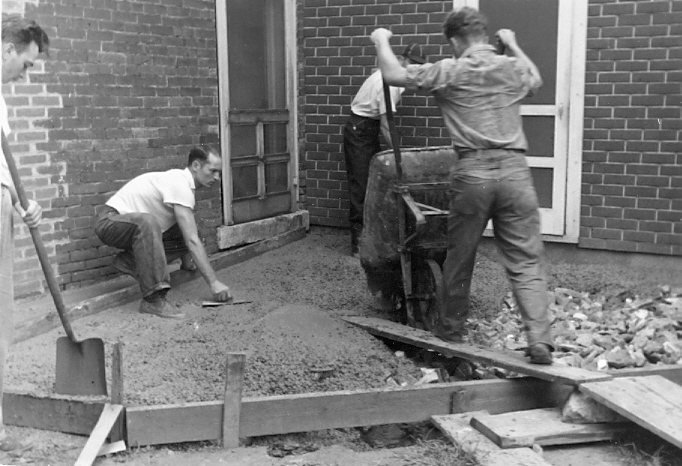 CPS Camp No. 24, subunit 2, Williamsport Maryland.Pouring concrete for the back porch; August 26, 1942. Photo by Robert M. Seese.Digital Image © 2011 Brethren Historical Library and Archives. All Rights Reserved.Aug. 26, 1942
CPS Camp No. 24, subunit 2, Williamsport Maryland.Pouring concrete for the back porch; August 26, 1942. Photo by Robert M. Seese.Digital Image © 2011 Brethren Historical Library and Archives. All Rights Reserved.Aug. 26, 1942 -
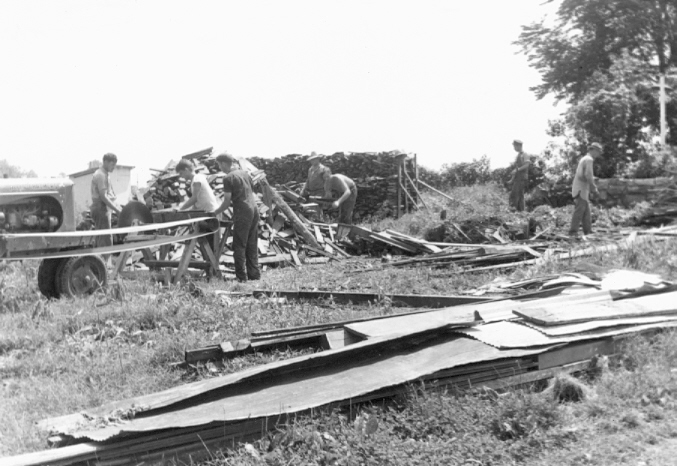 CPS Camp No. 24, subunit 2, Williamsport Maryland.Part of the Saturday afternoon crew sawing up scrap lumber and mowing weeds; Aug. 26, 1942. Photo by Robert M. Seese.Digital Image © 2011 Brethren Historical Library and Archives. All Rights Reserved.
CPS Camp No. 24, subunit 2, Williamsport Maryland.Part of the Saturday afternoon crew sawing up scrap lumber and mowing weeds; Aug. 26, 1942. Photo by Robert M. Seese.Digital Image © 2011 Brethren Historical Library and Archives. All Rights Reserved. -
 CPS Camp # 24, Hagerstown, MarylandDigging post holes in slop and slushBox 1, Folder 15. MCC Photographs, Civilian Public Service, 1941-1947. IX-13-2.2. Mennonite Central Committee Photo Archive
CPS Camp # 24, Hagerstown, MarylandDigging post holes in slop and slushBox 1, Folder 15. MCC Photographs, Civilian Public Service, 1941-1947. IX-13-2.2. Mennonite Central Committee Photo Archive -
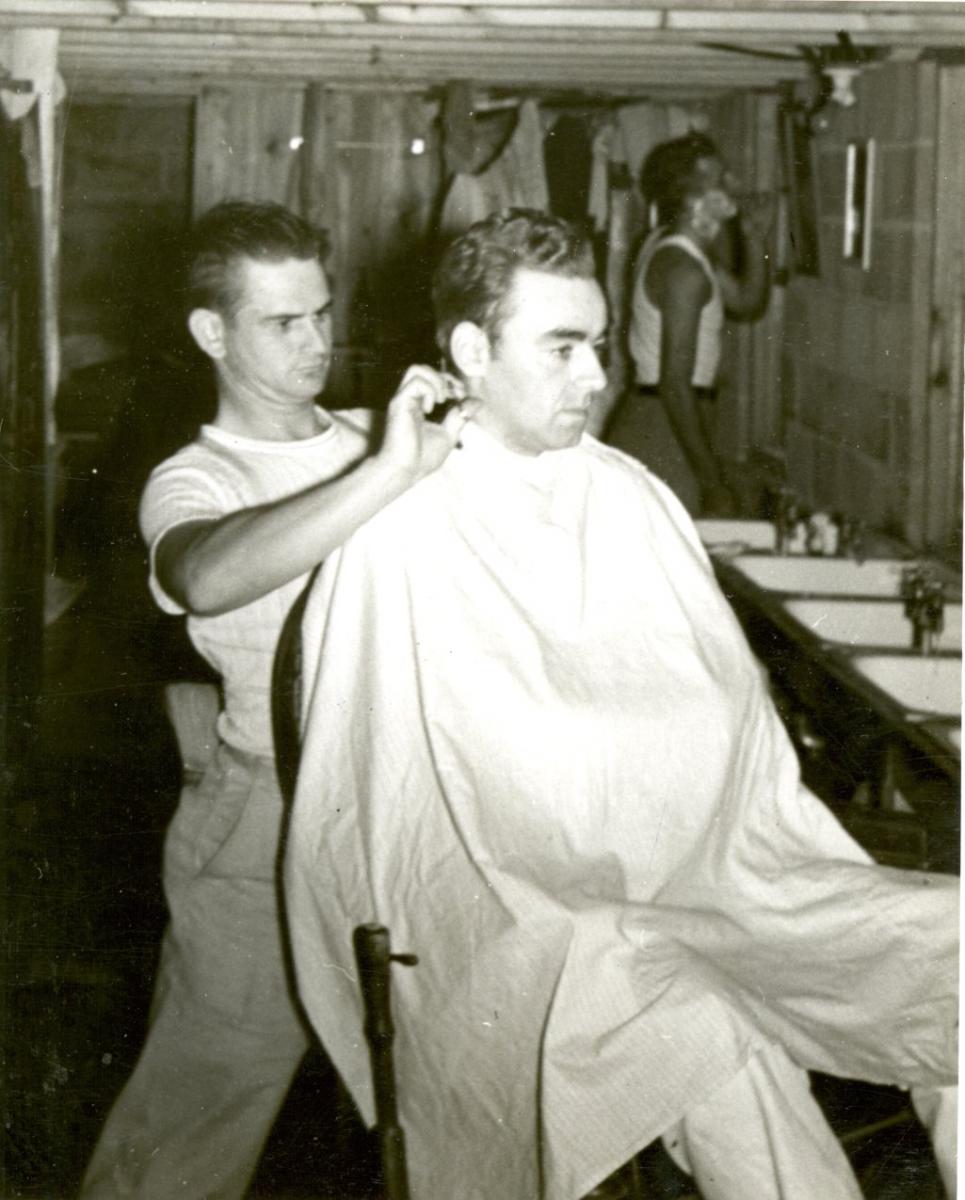 CPS Camp # 24, Hagerstown, Maryland"Campee barber"Photo # 46 Box 1, Folder 15. MCC Photographs, Civilian Public Service, 1941-1947. IX-13-2.2. Mennonite Central Committee Photo Archive
CPS Camp # 24, Hagerstown, Maryland"Campee barber"Photo # 46 Box 1, Folder 15. MCC Photographs, Civilian Public Service, 1941-1947. IX-13-2.2. Mennonite Central Committee Photo Archive
-
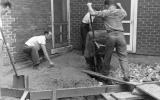 Aug. 26, 1942
Aug. 26, 1942 -

-
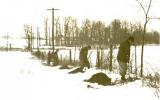
-
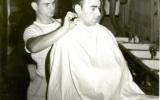
CPS Camp No. 24 Subunit 3 at Boonsboro, Maryland, a Soil Conservation Service camp on a farm owned and operated by Old Order Amish Mennonites near Boonsboro, Maryland and supervised by the Mennonite Central Committee, opened in February 1942 and closed in September 1946. While two men operated the farm, the remainder performed soil conservation activities, with the bulk of time spent building fences.
The camp was located fifteen miles south of Hagerstown.
Directors: John Spicher, Reuben Stoltzfus, John Stoltzfus, Daniel King, Wm. Hochstetler, Ananias Hershberger
Matron: Mrs. Henry Beiler
Nearly all the assignees declared their religious affiliation when entering CPS as Amish. They lived in the large farmhouse and a small barracks nearby.
One of their members, Henry Beiler served as director of the farm, which the Amish purchased in 1941 with the intention that it serve as a CPS unit. While two men operated the farm, the remainder performed soil conservation activities, with the bulk of time spent building fences.
Mennonite Central Committee provided an amount of funds per man for each camp’s operations. All the operating expenses, however, were covered by the Amish at Boonsboro.
As in other CPS units, the Soil Conservation Service made CPS labor available to farmers who agreed to improve pasture fields and “remove from cultivation lands not suited for this purpose”.
Camp life during leisure hours included woodworking, furniture-making, production of large bird houses for sale, and baseball.
Circulation of the camp newspaper, The Sun-Beam, was the largest of any MCC camp. It began in January 1944, and continued through April 1945.
With close community ties, this unit was reported to have more visitors from home than any other CPS unit. (Keim)
For CPS No. 24 see Melvin Gingerich, Service for Peace: A History of Mennonite Civilian Public Service. Akron, PA: Mennonite Central Committee printed by Herald Press, Scottdale, PA 1949, pp. 177-181.
For general information on CPS camps see Albert N. Keim, The CPS Story: An Illustrated History of Civilian Public Service. Intercourse, PA: Good Books 1990.